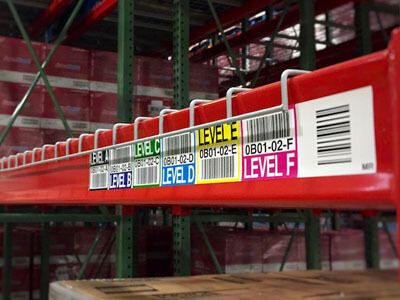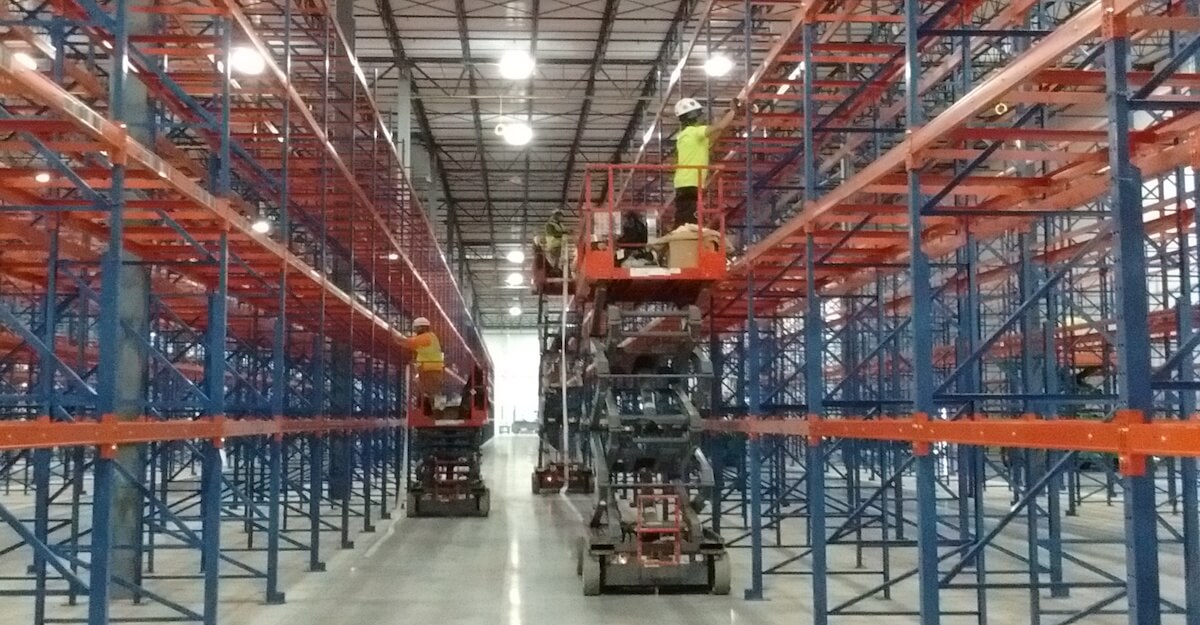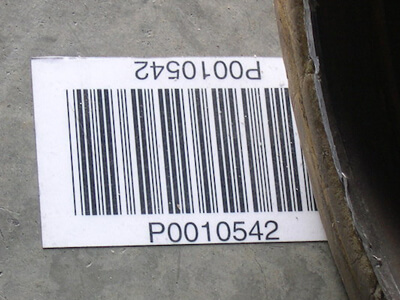6 Key Warehouse Label Performance Factors
Are you investigating options for new custom warehouse barcode labels?
- Perhaps your DC is preparing for a WMS upgrade.
- Or you need to replace old rack labels that are damaged, peeling and fading.
- Or maybe you’ve got a new facility with a looming go-live date.
Barcode labels are a critical component of your inventory management system, but how can you be sure your labels are right for your environment and application? And how do you compare what one vendor is quoting versus another?
“It’s critical that a label vendor understands the operational conditions of your warehouse or DC before they recommend an appropriate solution for your needs,” said ID Label CEO Neil Johnston.
“Believe it or not, there are a wide variety of materials, adhesives, laminates and printing technology that go into designing an effective barcode label. It’s certainly not one size fits all, so we really work closely with our clients to ensure the solution matches the need and operating environment.”

It’s critical that your label vendor understands the operational conditions of your warehouse or DC before they recommend an appropriate solution for your needs.
 “A label’s adhesive properties have to match the surface they’re being applied to. A freshly painted steel warehouse beam is going to have different qualities than a PVC overhead sign or a plastic tote.”
“A label’s adhesive properties have to match the surface they’re being applied to. A freshly painted steel warehouse beam is going to have different qualities than a PVC overhead sign or a plastic tote.”
– Neil Johnston, ID Label CEO
6 Key Environmental Factors
According to Johnston, it’s imperative to answer the following questions to determine the right barcode labeling solution.

1. What kind of surface will the labels be applied to?
“A label’s adhesive properties have to match the surface they’re being applied to,” Johnston said. “A shrink-wrapped pallet is going to have different qualities than a plastic bin or PVC overhead sign. In racking, structural and roll-form beams have different adhesive attributes that are important to consider in the label design.”
The wrong construction can lead to peeling, wrinkling or failure. And that can mean the difference between a durable, long-lasting, high-performance label versus one that triggers scan errors and hinders worker productivity.
2. What condition is the racking system in?
“Surface preparation is vital when installing warehouse rack labels,” Johnston said. “It’s a critical, time-consuming step. That’s why many of our clients outsource installation to us to ensure the job is done right. Even a new facility requires preparation. Concrete dust is abundant with new rack installations.”
If you’re relabeling racks that have been in service for a while, they are likely to contain grime, grease and dust, and perhaps areas where the paint is scratched or peeling. Without preparation and treatment, labels applied to these conditions are more likely to fail – potentially soon after installation.
What about the old barcode labels? To avoid the time-consuming task of scraping and removing old barcode labels prior to relabeling, ID Label’s Beam Renew™ cover-up solution is often recommended. Its durable construction features an opaque metalized adhesive backside for 100 percent cover-up. And it easily applies over dingy warehouse beams or damaged barcode labels to keep beams looking clean and new.

3. Will your new labels be used inside or outdoors?
“Outdoor applications require special consideration,” Johnston said. “The mix of weather conditions and the sun’s ultraviolet rays can cause untreated labels to quickly fade, deteriorate and peel.”
ID Label’s advanced digital inkjet technology uses specialty UV-resistant inks and laminates to protect barcode labels from harsh temperatures and conditions.
4. Will the labels be used in a cold or freezer environment? If so, at what temperatures will they be applied?
“For cooler and freezer applications, effective adhesion is a key concern and top priority,” Johnston said. “Humidity and frost can cause labels to lose their adhesive values.”
It’s important to know if the labels will be installed in a new facility prior to temperature draw down or in an active freezer environment. Some adhesives may, for instance, perform well at -20 degrees but might be recommended for installation at -10F or warmer. ID Label’s Arctic Xtreme™ features an advanced freezer-grade adhesive that is rated to perform in temperatures as low as -65F.
Magnet-backed labels are also an excellent choice in freezer locations.


5. Are the labels liable to encounter daily bumps and scrapes from forklift trucks and pallet skids?
No matter how careful workers are, warehouse barcode labels will inevitably come in close contact with pallets, lift trucks and other traffic.
“Scratched and damaged barcodes from poorly manufactured labels can be a real hindrance to productivity,” Johnston said. “Not only do they have to be replaced more often, but if the label doesn’t scan, the data has to be entered manually. This is time consuming and can lead to costly inventory errors.”
Look for ultra-durable labels like ID Label’s BullsEye™ products. “Our custom-engineered BullsEye labels feature a super-strength protective coating to prevent tearing and damage to the barcode image,” Johnston said.
6. Will the labels come in contact with harsh cleaning solutions or high temperatures?
In manufacturing facilities, laboratories, electronic component companies and similar environments, conditions can be extreme.
“Exposure to high temperatures, chemicals, welding spatter and industrial cleaning solutions are not uncommon,” Johnston said, “so label materials and construction are vital to performance.”
There are several options for harsh-environment labeling. For instance, polyimide (Kapton) labels are WEEE and RoHS compliant and can withstand sustained temperatures up to 750F and flash temperatures up to 1000F. They can also withstand harsh thermal and chemical exposures and still provide reliable read rates.
Anodized aluminum barcode tags are also an excellent choice for many harsh-environment applications. They are resistant to abrasions, industrial solvents and extreme temperatures, and feature high-tack adhesives for extreme durability.
 “”Poorly designed labels that use the wrong materials and don’t consider your operational environment are likely to be highly ineffective. They may degrade, fade, lose their adhesive values or easily become damaged.”
“”Poorly designed labels that use the wrong materials and don’t consider your operational environment are likely to be highly ineffective. They may degrade, fade, lose their adhesive values or easily become damaged.”
– Neil Johnston, ID Label CEO
The Right Label Will Perform in Virtually Any Environment
It’s critical to understand the above environmental factors to ensure your labels will perform to your requirements. That means accurate scans every time, regardless of the operational conditions of our facility.
“Poorly designed labels that use the wrong materials and don’t consider your operational environment are likely to be highly ineffective,” Johnston said. “They may degrade, fade, lose their adhesive values or become damaged. If any of these things happen, you’re likely to encounter read errors, lost productivity and wasted expense that adversely impact your operations.”
Johnston added: “We take pride in knowing that our quality-manufactured labels scan accurately each and every time. That’s because we first work with our customers to understand their application, environment and use. This knowledge allows us to identify the best materials and print process to ensure durability, performance and scan accuracy.”

The ID Label Advantage
ID Label manufactures extremely durable warehouse rack and bin location labels. Our materials have been tested and used in warehouse operations around the globe.
We also provide warehouse signage and turnkey nationwide installation services to provide a complete solution to our many clients who rely on us for all their warehousing needs.
Interested in learning more? Contact us today.
